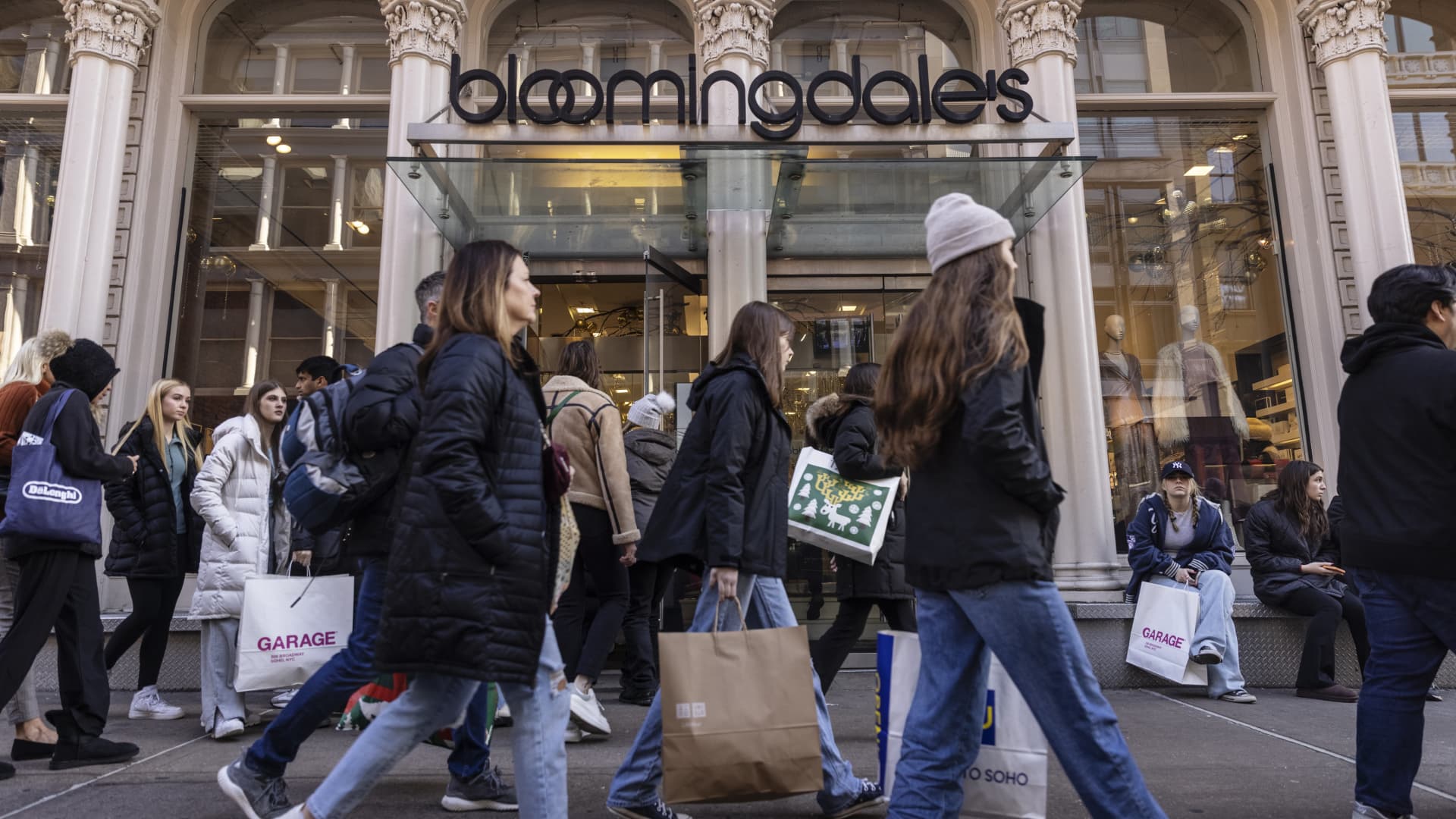Despite higher prices, consumers are still spending, although not as much as they were a year ago, which is giving their budgets some breathing room.
As of January, 60% of all U.S. adults, including 45% of high-income earners, were living paycheck to paycheck, according to a new LendingClub report. That’s down from 64% a year earlier, suggesting that last year’s spending cutbacks have improved some consumers’ financial situations.
“Consumers have accepted that inflation is part of their everyday lives and they are actively making behavior changes, especially during the 2022 holiday shopping season, to adjust their spending and better manage their cash flow,” said Anuj Nayar, LendingClub’s financial health officer.
Yet the latest inflation reading from last Friday’s core personal consumption expenditures index was hotter than expected, showing some spending habits are hard to break. Consumer spending jumped 1.8% for the month compared to the estimate of 1.4%.
More from Personal Finance:
Some Treasury bills are now paying 5%. Here’s what to know
As data shows inflation rose in January, here’s what to expect
Almost half of Americans think we’re already in a recession
To make ends meet as prices increase, more Americans are leaning on credit cards, other reports show.
At the end of 2022, credit card debt hit a record $930.6 billion, an 18.5% spike from a year earlier, and average credit card balance rose to $5,805, according to the latest report by TransUnion.
Total household debt also increased by 2.4% to $16.9 trillion in the fourth quarter of last year, the Federal Reserve Bank of New York found.
Now, nearly half, or 46%, of credit cardholders carry debt from month to month on at least one card, up from 39% last year, according to another report by Bankrate.com.
“If you have credit card debt — and more than a third of Americans do — then using some of your tax refund money to pay down this high-cost debt would be an excellent choice,” said Ted Rossman, senior industry analyst at Bankrate.
How to improve your financial standing
Certified financial planner Ted Jenkin, CEO and founder of oXYGen Financial in Atlanta and a member of CNBC’s Financial Advisor Council, offers other tips for spending less and maximizing your savings.
1. Cut spending
Jenkin said some simple financial hacks can help, such as going to the grocery store less and cutting back on online shopping.
“Grocery stores are just like Las Vegas; they are there to separate you from your wallet,” he said. Meal planning is one way to edit down your shopping list to weekly essentials to save money.
Disabling one-click ordering or deleting stored credit card information can also help. “Anyone that shops on Amazon and has a stored credit card, you are basically pouring lighter fluid on your budget,” Jenkin said.
You really have to get disciplined or you’re going to outspend your income.Ted JenkinCEO and founder of oXYGen Financial
Jenkin recommends waiting 24 hours before making an online purchase and then using a price-tracking browser extension such as CamelCamelCamel or Keepa to find the best price.
Finally, tap a savings tool such as Cently, which automatically applies a coupon code to your online order, and pay with a cash-back card such as the Citi Double Cash Card, which will earn you 2%.
“You really have to get disciplined or you’re going to outspend your income,” he said.
2. Boost savings
The money you put away should also work to your advantage, Jenkin said.
Although deposit rates are climbing, even a high-yield savings account won’t pay enough to keep up with the rising cost of living.
Jenkin recommends buying short-term, relatively risk-free Treasury bonds and laddering them to ensure you earn the best rates, a strategy that entails holding bonds to the end of their term.
“It’s not a huge return, but you are not going to lose your money,” he said.
Another option is to purchase federal I bonds, which are inflation-protected and nearly risk-free assets.
I bonds are currently paying 6.89% annual interest on new purchases through April, down from the 9.62% yearly rate offered from May through October 2022.
Still, this will work well as a hedge against inflation for long-term savers. The downside is that you can’t redeem I bonds for one year, and you’ll pay the last three months of interest if the bonds are cashed in before five years.
LendingClub’s paycheck-to-paycheck report is based on a survey of more than 4,000 U.S. adults in January.
